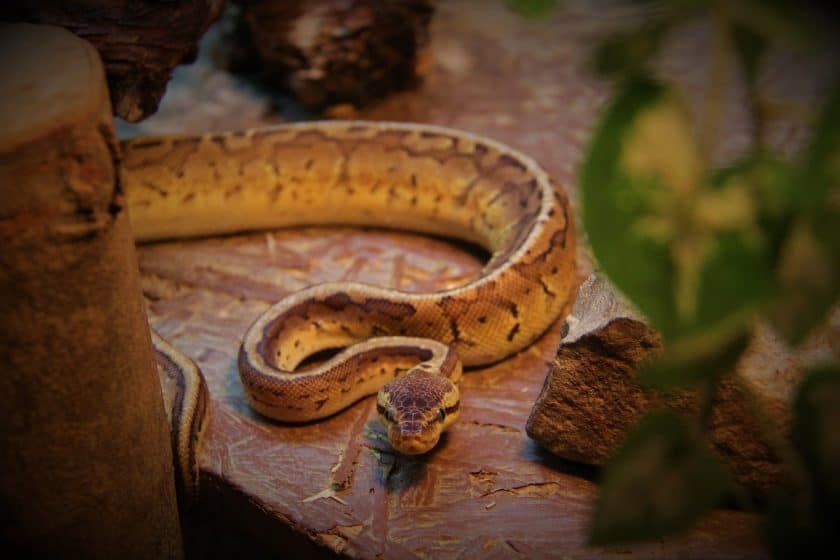How Long Can a Ball Python Go Without Eating? A Comprehensive Guide
Ball pythons, also known as royal pythons, are one of the most popular pet snakes due to their manageable size, docile nature, and striking appearance. As a responsible pet owner, understanding your ball python’s dietary needs and how long they can go without food is essential for their health and well-being. This article will explore the factors affecting a ball python’s ability to survive without eating, how long they can typically go without food, and the implications of extended fasting.
Understanding Ball Python Diet
Before delving into how long ball pythons can go without eating, it’s important to understand their dietary needs. In the wild, ball pythons primarily feed on small mammals, such as rodents. They are constrictors, meaning they subdue their prey by wrapping around it and squeezing until it suffocates. In captivity, ball pythons are commonly fed frozen or live mice and rats, depending on the owner’s preference.
Feeding Frequency
The frequency of feeding varies based on the age and size of the ball python:
- Juvenile Ball Pythons:
- Juveniles typically require more frequent feeding to support their growth. They should be fed every 5 to 7 days, with prey items that are roughly the size of the widest part of their body.
- Adult Ball Pythons:
- Adult ball pythons can be fed less frequently, typically every 10 to 14 days. The size of the prey should also be proportionate to the snake’s girth.
How Long Can Ball Pythons Go Without Eating?
- General Guidelines:
- Ball pythons can survive without food for an extended period due to their slow metabolism. In general, a healthy adult ball python can go without eating for several weeks to several months.
- Specific Timeframes:
- While ball pythons can survive for up to 6 months without food, this duration is not ideal for their health. Extended fasting can lead to malnutrition, weakened immune systems, and other health complications.
- Factors Affecting Fasting Duration:
- Age: Younger snakes require more frequent feeding and may not survive as long without food as adults.
- Health: A healthy ball python can endure longer periods without food. Illness or stress can shorten this duration.
- Temperature: Ball pythons are ectothermic, meaning their metabolism is influenced by their environment. Cooler temperatures can slow their metabolism further, allowing them to survive longer without food.
- Brumation: Some ball pythons may enter a state of brumation (similar to hibernation) during colder months, during which they may not eat for several weeks or months.
Signs of Hunger and Health Issues
While ball pythons can survive for extended periods without food, it is important to monitor their health and behavior. Signs that a ball python may be hungry or unwell include:
- Increased Activity: A hungry ball python may become more active, searching for food or exhibiting restlessness.
- Weight Loss: Significant weight loss over time can indicate that a ball python is not getting enough food or is experiencing health issues.
- Lethargy: If a ball python becomes lethargic or inactive, it may be unwell and should be evaluated by a veterinarian.
- Refusal to Eat: If a ball python consistently refuses food, it may be a sign of stress, illness, or environmental issues.
Proper Feeding and Care for Ball Pythons
To ensure that your ball python remains healthy and does not go long periods without food, proper care and feeding practices should be followed:
- Balanced Diet: Provide a balanced diet that includes appropriately sized prey items. Frozen prey is often recommended for safety and convenience.
- Regular Feeding Schedule: Establish a regular feeding schedule based on the ball python’s age and size. Young snakes may need to be fed more frequently than adults.
- Monitor Health: Regularly check your ball python’s weight and overall condition. If you notice any changes in behavior or health, consult a veterinarian experienced in reptile care.
- Environmental Conditions: Ensure that the enclosure is maintained at the appropriate temperature and humidity levels. Ball pythons thrive in warm environments, and stress from improper conditions can lead to feeding issues.
- Veterinary Care: Regular check-ups with a veterinarian can help monitor your ball python’s health and address any issues early on.
Summary Table of Ball Python Feeding and Care
| Factor | Description |
|---|---|
| Species | Ball Python (Python regius) |
| Lifespan | 20-30 years (in captivity) |
| Feeding Frequency | Juveniles: every 5-7 days; Adults: every 10-14 days |
| Survival Without Food | Up to 6 months (not ideal for health) |
| Signs of Hunger | Increased activity, weight loss, lethargy |
| Balanced Diet | Frozen or live rodents, appropriately sized |
| Environmental Needs | Warm temperatures, proper humidity |
For more information on ball pythons and their care, you can refer to Wikipedia.
FAQ Section
1. How long can ball pythons go without eating?
Ball pythons can survive without food for several weeks to several months, with healthy adults capable of lasting up to 6 months. However, this is not ideal for their health.
2. What factors affect how long a ball python can go without food?
Factors include age, health, temperature, and whether the snake is in a state of brumation.
3. How often should I feed my ball python?
Juvenile ball pythons should be fed every 5 to 7 days, while adults can be fed every 10 to 14 days.
4. What should I do if my ball python refuses to eat?
If your ball python refuses food, check for signs of stress or illness. Ensure that the environment is suitable, and consult a veterinarian if the refusal persists.
5. Can ball pythons eat frozen food?
Yes, ball pythons can eat frozen prey, which is often recommended for safety and convenience. Ensure that the prey is properly thawed before feeding.
Conclusion
Understanding how long ball pythons can go without eating is essential for responsible pet ownership. While these snakes can survive for extended periods without food, regular feeding and proper care are crucial for their health and well-being. By following the guidelines outlined in this article, you can ensure that your ball python remains healthy and happy throughout its life. Regular monitoring, a balanced diet, and a suitable environment will help you provide the best care for your pet snake.



